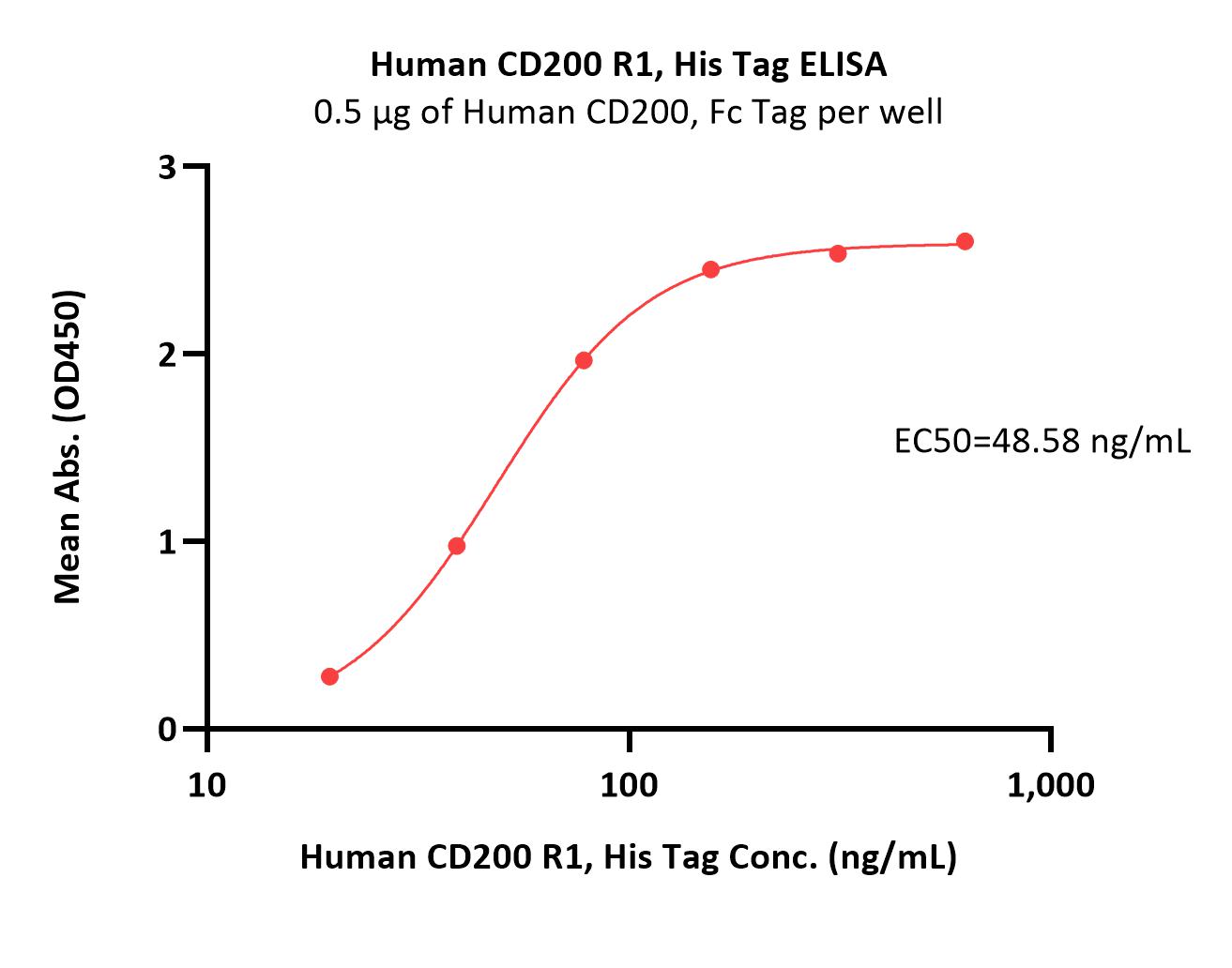分子别名(Synonym)
CD200R,CRTR2,MOX2R,OX2R
表达区间及表达系统(Source)
Human CD200 R1, His Tag (CR2-H52H6) is expressed from human 293 cells (HEK293). It contains AA Ala 27 - Leu 266 (Accession # AAQ19772.1).
Predicted N-terminus: Ala 27
Request for sequence
蛋白结构(Molecular Characterization)

This protein carries a polyhistidine tag at the C-terminus.
The protein has a calculated MW of 28.7 kDa. The protein migrates as 48-65 kDa under reducing (R) condition (SDS-PAGE) due to glycosylation.
内毒素(Endotoxin)
Less than 1.0 EU per μg by the LAL method.
纯度(Purity)
>90% as determined by SDS-PAGE.
制剂(Formulation)
Lyophilized from 0.22 μm filtered solution in PBS, pH7.4. Normally trehalose is added as protectant before lyophilization.
Contact us for customized product form or formulation.
重构方法(Reconstitution)
Please see Certificate of Analysis for specific instructions.
For best performance, we strongly recommend you to follow the reconstitution protocol provided in the CoA.
存储(Storage)
For long term storage, the product should be stored at lyophilized state at -20°C or lower.
Please avoid repeated freeze-thaw cycles.
This product is stable after storage at:
- -20°C to -70°C for 12 months in lyophilized state;
- -70°C for 3 months under sterile conditions after reconstitution.
质量管理控制体系(QMS)
电泳(SDS-PAGE)

Human CD200 R1, His Tag on SDS-PAGE under reducing (R) condition. The gel was stained with Coomassie Blue. The purity of the protein is greater than 90%.
活性(Bioactivity)-ELISA

Immobilized Human CD200, Fc Tag (Cat. No. OX2-H5251) at 5 μg/mL (100 μL/well) can bind Human CD200 R1, His Tag (Cat. No. CR2-H52H6) with a linear range of 20-78 ng/mL (QC tested).
Protocol
 +添加评论
+添加评论背景(Background)
Cell surface glycoprotein CD200 receptor 1 is a protein that in humans is encoded by the CD200R1 gene. This gene encodes a receptor for the OX-2 membrane glycoprotein. Both the receptor and substrate are cell surface glycoproteins containing two immunoglobulin-like domains. This receptor is restricted to the surfaces of myeloid lineage cells and the receptor-substrate interaction may function as a myeloid downregulatory signal. CD200 and its receptor CD200R are both type-1 membrane glycoproteins, which are members of the immunoglobulin superfamily (IgSF). Besides the inhibitory effect on macrophages, CD200/CD200R also play an important role in regulating the regulatory T cells, allergicreaction, autoimmune diseases, allograft, neurological diseases and other autoimmune-related diseases. The interaction between CD200, which is mainly present in neurons but also in astrocytes, and CD200R1, which is mainly present in microglia, is one of the mechanisms involved in keeping the microglial proinflammatory phenotype under control in physiological conditions. Alterations in the expression of CD200 and CD200R1 have been described in neurodegenerative diseases, but little is known about the mechanism of regulation of these proteins under physiological or pathological conditions.























































 膜杰作
膜杰作 Star Staining
Star Staining















